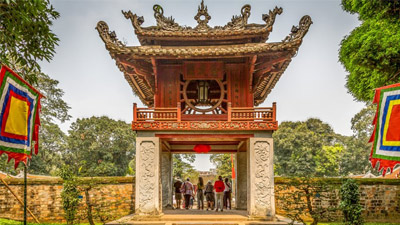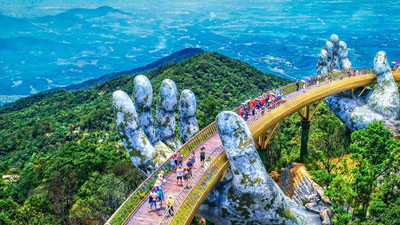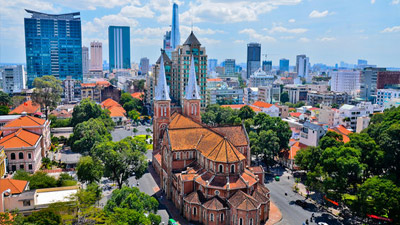Chol Chnam Thmay Festival
 This holiday is the New Year festival in ancient calendar of Khmer people. Held in mid-April, the festival occurs in 3 days (4 days for leap year).People prepare new clothes, food and drinks for whole festival days. They also repair, clean and decorate their house. Everyone is excited to care for holiday.
This holiday is the New Year festival in ancient calendar of Khmer people. Held in mid-April, the festival occurs in 3 days (4 days for leap year).People prepare new clothes, food and drinks for whole festival days. They also repair, clean and decorate their house. Everyone is excited to care for holiday.
This holiday is also called Chol Chnam Thmay (or Chaul Chnam Thmay). It is the New Year festival in ancient calendar of Khmer people. Held in mid-April, the festival occurs in 3 days (4 days for leap year). Each festival day has a different name: The first day is named “Moha Songkran” (or Chol sangkran Chmay); the second day is named “Wanabat” (or Wonbof); the third day is named “Tngai Laeung Saka” (or Lom Sak); the fourth day (only in leap years) is also named Wonbof. In this holiday, people usually visit each other, wish each other fortune, health, prosperity and join many fun games together.
People prepare new clothes, food and drinks for whole festival days. They also repair, clean and decorate their house. Everyone is excited to care for holiday.
At night of eve, every family prepares a lavish meal, burns incense and candles to welcome new god, farewell the old god. On the altar, they present 5 flower branches, 5 candles, 5 incense, 5 cereal seeds and fruit crops. They pray for health and luck in the New Year.
Chol sangkran Chmay day is the first day of calendar procession ceremony. Major activities are bathing, dressing nice, bringing sacrifice gifts to the temple in good time which has been selected. People bring sacrifice gifts such as incense, flowers and fruits to the temple and put them on gilded trays. After doing palanquin procession ceremony, they chant to welcome a new year.
On Wonbof day, they make rice offerings and cover the sand mountain. People cook rice and bring it to the temple in the morning and the afternoon. In the afternoon, they hold the sand mountain covering ceremony to pray for love.
On Lom Sak day, they do Buddha bathing and monk-bathing ceremony. In the morning, people bring breakfast to monks and listen to the sermon. At noon, they burn the lamps, offer sacrifice gifts and bring fragrant water to bathe Buddha statues. After the ceremony at the temple, the monks go to the grave to pray for the souls of those who died. Then they go home and do Buddha bathing ceremony at their own home in order to receive forgiveness for the mistakes in the previous year.

Co Loa Citadel Festival
Co Loa Citadel Festival is held from 6th to 16th day of the first lunar month in the year, just after Lunar New Year Festival. The festival takes place at Upper Temple ("Den Thuong"), Dong Anh...

Danang International Fireworks Competition
Danang International Fireworks Competition is an annual international fireworks competition hosted by Danang City. The first Danang International Fireworks Competition was held in 2008. Every year,...

Halong Carnival 2023 - 2024
"Halong Carnival" is the biggest annual festival in Halong which attracts a huge number of tourists each year. Tourists coming to Halong Bay will be dazzled by colorful and bustling atmosphere of...

Hue Festival
Hue Festival is a big cultural event of Hue City that is held every two years. There is a week (usually in April, May or June) for each festival season which is the occasion to honor cultural and...

Huong Pagoda Festival
Situated in Huong Son Site, Hanoi, Huong Pagoda complex is considered as one among centers of Buddhism in Vietnam. The pagoda complex consists of several Buddhist pagodas and temples on Huong Tich...

King Hung Temple Festival
King Hung Temple Festival is a traditional festival which honors the first King of Vietnam - King Hung. It's occasion for every Vietnamese to remember their origin and express their respect as well...
Vietnam Travel Guide
- Vietnam Overview
- Vietnam Geography
- Vietnam History
- Vietnam Ecology And Environment
- Vietnam Government And Politics
- Vietnam Economy
- Vietnam Demographics
- Vietnam Customs
- Vietnam Art Performance
- Vietnam Religions
- Vietnam Festivals
- Vietnam Gastronomy
- Get To Vietnam
- Vietnam Travel Tips
- Vietnam Travel Articles & News

 BEST TOURS
BEST TOURS



